The most time consuming and detailed part of refinishing the doors in my house involves stripping the paint from the door moulding, (as opposed to Door Trim Moulding). Large, flat areas can be scraped and sanded. But the molding has alternating concave and convex curves, requiring detailed hand work.
On the first door, I cleaned the large, flat areas before turning to chemically strip the moulding. After I finished, I wiped down the moulding with mineral spirits, to remove any excess stripper. But when it came time to apply the stain, it was obvious that the stripper had soaked into the wood, and wasn’t completely removed. It caused obvious differences in the stain.
Since then, I’ve switched to stripping the moulding first. The remaining paint on the flat surfaces prevents too much stripper soaking in, and the sanding of those surfaces removes anything else. This produced a very consistent, smooth stain.
I start with an overall initial pass with a cheaper stripper. It removes most of 3 layers of paint.
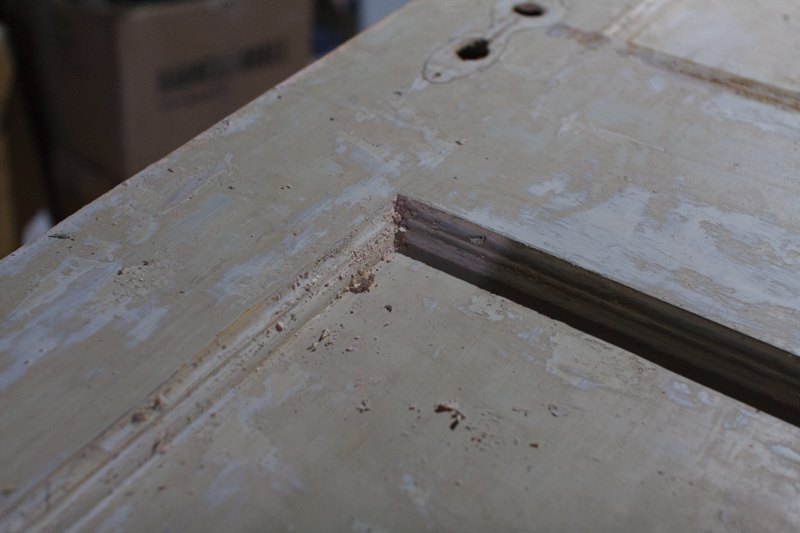
I then tape off the molding, with painter’s tape. This prevents the chemical stripper from spreading too far and soaking into the wood. On the top, I keep the tape back just a millimeter or so, to account for the thickness of the paint. On the lower interior, I inset the tape about a centimeter or so. This lets the stripper remove a little more along the interior edges, where even with a detail sander, I can’t remove right up to the exact edge.
I then paint a thick layer of stripper into the taped-off moulding:
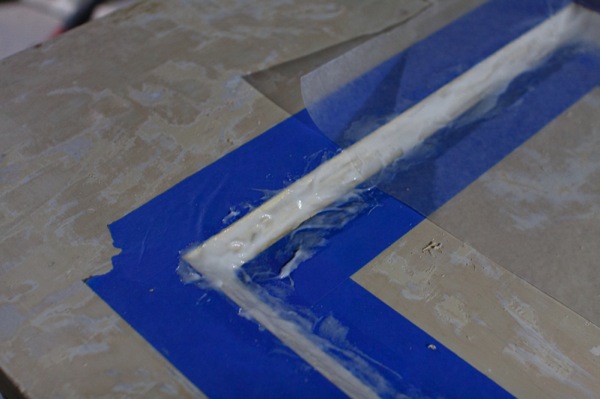
I cover it with wax paper — which doesn’t react with the stripper, but does keep the stripper from drying too fast, allowing it to work longer. The stripper at this stage is SmartStrip. I let it work for as long as possible, which is about 22 hours.
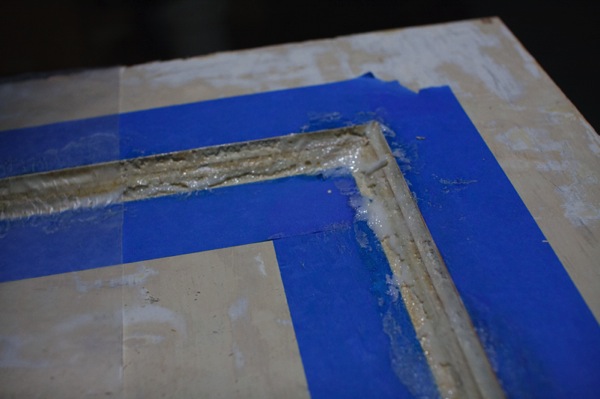
At this point, I use a multi-purpose painter’s tool to scrape away as much as possible. I’ve looked into more specialized scrapers, but the only thing they’d really work on is the concave portion, which is the easiest to clean the painter’s tool. This can remove most of the paint, but not quite all. Some places it is just too thick, and in the interior, sharp edges, it often doesn’t get the last bit.
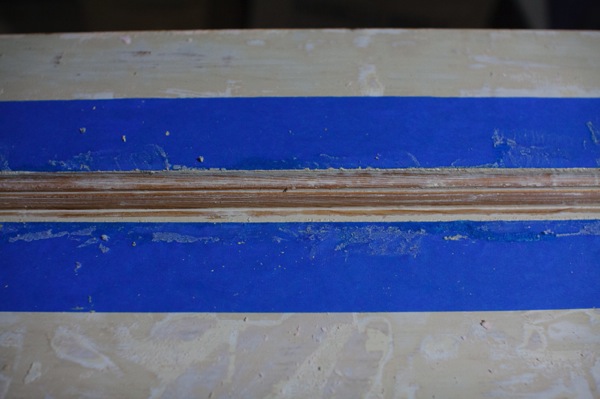
I apply a second, lighter layer of the stripper, using the same process. One day later, I scrape the moulding down again. This has managed to remove all the paint from the moulding.
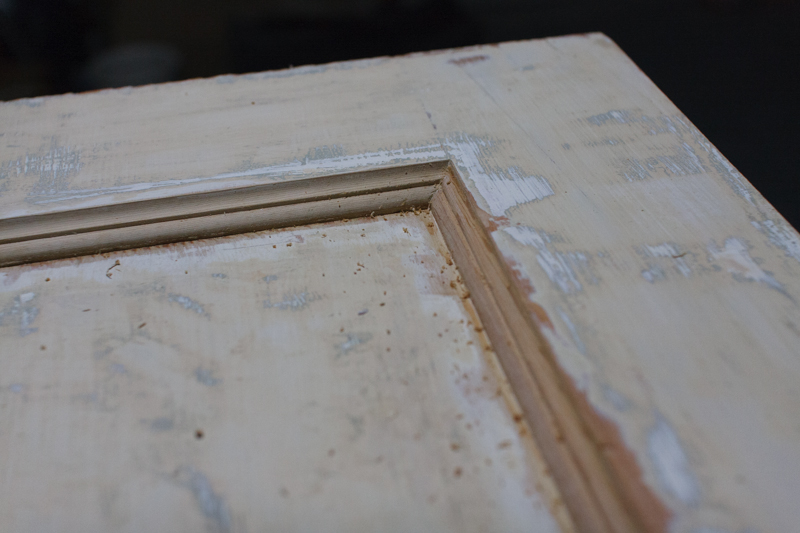
It raises the grain, and can leave the wood rough in some places. But when I get to sanding, I also sand the moulding using steel wool, which leaves a smooth but still sharp shape.
(If the stripper can take it all the way down to the wood, why don’t I use it on the entire door, and forget the sanding? It’s expensive, and I can afford a little time to save a little money.)
Leave a Reply